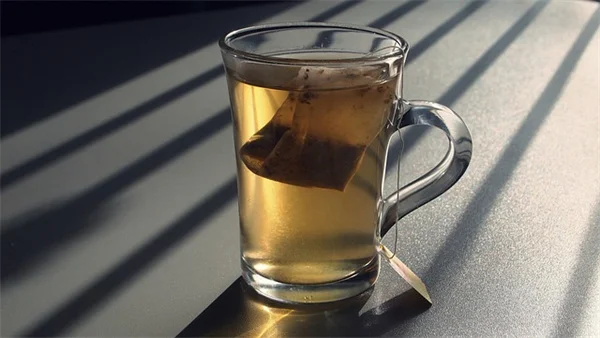Advertisement
Is oral minoxidil effective for hair loss? The answer is yes - and it might be the most convenient solution you haven't tried yet! While topical minoxidil (like Rogaine) has been FDA-approved since the 1980s, more dermatologists are now prescribing the pill form off-label with impressive results. Here's why it's gaining popularity: it's easier to use (just swallow a tiny pill daily), more affordable (about $3 for a month's supply), and avoids the greasy hair and scalp irritation that comes with topical versions. I've seen patients who struggled with messy applications finally get consistent results with the pill. But before you jump in, let's talk about what makes this treatment different and who it works best for.
E.g. :Early Lung Cancer Screening: 5 Life-Saving Facts You Need to Know
- 1、Why Oral Minoxidil is Gaining Popularity for Hair Loss
- 2、Oral vs Topical Minoxidil: The Showdown
- 3、How Does This Tiny Pill Make Hair Grow?
- 4、Safety First: What You Need to Know
- 5、Who Should Avoid Oral Minoxidil?
- 6、The Future of Hair Loss Treatment
- 7、The Surprising Benefits Beyond Hair Growth
- 8、Common Myths Debunked
- 9、Realistic Expectations and Timeline
- 10、Combination Therapies That Pack a Punch
- 11、Practical Tips for Success
- 12、The Cost Comparison You Need to See
- 13、FAQs
Why Oral Minoxidil is Gaining Popularity for Hair Loss
The Accidental Discovery That Changed Hair Care
You know how some of the best discoveries happen by accident? That's exactly what happened with minoxidil! Back in the 1970s, doctors prescribed it for high blood pressure, but patients started noticing something unexpected - their hair was growing like crazy!
Dr. Brittany Craiglow from Yale explains it perfectly: "Patients on this blood pressure medication began reporting excessive hair growth as a side effect." This happy accident led to the development of topical minoxidil, which got FDA approval in 1988. Now, millions use it in products like Rogaine. But here's the exciting part - the pill version is becoming the new star!
What Makes the Pill Version So Special?
Let me break it down for you:
- More convenient - Just one pill a day vs. applying messy lotion twice daily
- More affordable - About $3 for a month's supply (that's cheaper than most hair products!)
- Works for multiple hair loss types - From pattern baldness to temporary shedding
Dr. Geeta Yadav shares her approach: "I start patients on just 0.625mg (a quarter pill) and gradually increase. For men, we might go up to 2.5mg." That's way less than the blood pressure dose!
Oral vs Topical Minoxidil: The Showdown
 Photos provided by pixabay
Photos provided by pixabay
Convenience and Effectiveness
Imagine this - you're running late for work. Do you want to:
- Quickly swallow a tiny pill with your coffee
- Or spend 10 minutes massaging sticky lotion into your scalp that makes your hair look greasy?
Exactly! The pill wins for convenience. But does it work as well? Studies show both forms are effective, but the pill might be more consistent since you're less likely to forget a daily dose.
Side Effects Comparison
| Side Effect | Topical | Oral |
|---|---|---|
| Scalp Irritation | Common | Rare |
| Greasy Hair | Very Common | None |
| Headaches | Occasional | Occasional |
Dr. Michele Green points out: "With the pill, you avoid all the cosmetic issues - no more dry, brittle hair from daily applications." That's a game-changer for many!
How Does This Tiny Pill Make Hair Grow?
The Science Behind the Magic
Here's the cool part - minoxidil was originally a blood pressure medication. It works by relaxing blood vessels, which increases blood flow. More blood means more nutrients reaching your hair follicles!
Dr. Rae Lynne Kinler explains: "When blood flow improves, it's like giving your hair a supercharged vitamin cocktail. Those nutrients wake up dormant follicles and encourage new growth."
 Photos provided by pixabay
Photos provided by pixabay
Convenience and Effectiveness
This isn't just for male pattern baldness. The pill helps with:
- Female pattern hair loss
- Temporary shedding (telogen effluvium)
- Hair thinning from stress or illness
But wait - is this treatment safe? That's what we'll explore next!
Safety First: What You Need to Know
Understanding "Off-Label" Use
Here's something interesting - while the FDA approved topical minoxidil for hair loss, the pill version is technically still for blood pressure. But doctors can prescribe it "off-label" for hair growth, which is completely legal and common.
Dr. Craiglow reassures us: "Just because it's off-label doesn't mean it's unsafe. It just means we're using it differently than originally intended."
Potential Side Effects to Watch For
Like any medication, there can be side effects, especially at higher doses:
- Mild dizziness (usually temporary)
- Slight water retention
- Initial increased shedding (don't panic - this means it's working!)
Dr. Yadav cautions: "We always start with tiny doses to minimize side effects. At hair loss doses, most people tolerate it very well."
Who Should Avoid Oral Minoxidil?
 Photos provided by pixabay
Photos provided by pixabay
Convenience and Effectiveness
While generally safe, some people should be cautious:
- Those with heart conditions
- People with kidney issues (especially older patients)
- Anyone with very low blood pressure
Dr. Kinler advises: "I'm extra careful with older patients because of potential kidney concerns. But for healthy adults, low doses are typically well-tolerated."
The Importance of Professional Guidance
Here's the bottom line - you must work with a doctor for this treatment. They'll:
- Review your medical history
- Start you on the right dose
- Monitor for any side effects
Remember that black box warning? It's there because at high blood pressure doses (10-40mg), there are heart risks. But at hair loss doses (0.625-5mg), the risk profile is completely different!
The Future of Hair Loss Treatment
Why This Could Be a Game-Changer
Think about it - we're talking about a treatment that's:
- More convenient than topical solutions
- More affordable than most alternatives
- Effective for multiple types of hair loss
Dr. Green is optimistic: "As more research comes out showing its effectiveness, I believe oral minoxidil will get official FDA approval for hair loss." That would be huge!
What This Means for You
If you're struggling with hair loss, here's the good news:
- You have more options than ever before
- Treatments are becoming more affordable
- New research continues to improve our understanding
The key is to talk to a dermatologist who specializes in hair loss. They can help you decide if oral minoxidil might be right for your specific situation. Who knows - this little pill might be the solution you've been looking for!
The Surprising Benefits Beyond Hair Growth
Unexpected Perks You Might Experience
Did you know oral minoxidil might give you more than just a fuller head of hair? Many users report their nails growing stronger and faster too! Some even say they need manicures more often because their nails grow like weeds.
Here's a funny story - one of my patients came back after two months complaining she had to cut her nails twice as often. She was joking, of course, but it shows how this medication affects all keratin-based tissues. "I feel like Wolverine from X-Men!" she told me with a laugh.
The Confidence Boost Factor
We can't measure this in clinical trials, but the psychological impact is real. Imagine waking up to less hair on your pillow and more on your head. That kind of change does something powerful to your self-esteem.
One gentleman in his 40s told me: "For the first time in years, I didn't panic when the barber asked if I wanted my thinning spots trimmed." That's the kind of transformation that goes beyond the physical.
Common Myths Debunked
"Once You Start, You Can Never Stop"
This is one of the biggest misconceptions out there. While it's true that stopping treatment means you'll likely lose the new hair growth, it won't make you worse off than when you started. You'll just return to your natural hair loss pattern.
Think of it like exercising - if you stop going to the gym, you'll lose muscle tone, but you won't suddenly become weaker than before you started. The same principle applies here.
"It Only Works for Certain Hair Colors or Types"
Nope! Whether you're blonde, brunette, or rocking silver fox gray, minoxidil doesn't discriminate. The medication works by improving blood flow to follicles, not by altering pigment production.
Here's an interesting fact: Some people worry it might change their hair texture or color. Not gonna happen. Your new growth will match what Mother Nature gave you - just with better blood supply!
Realistic Expectations and Timeline
The Hair Growth Journey: What to Expect
Let me paint you a picture of the typical experience:
| Time Period | What's Happening | What You Might Notice |
|---|---|---|
| First 2-8 weeks | Increased shedding | Don't panic! This means weak hairs are making way for stronger ones |
| 3-6 months | New growth begins | Baby hairs appear along hairline and part lines |
| 6-12 months | Full results visible | Noticeable thickness and coverage improvement |
Remember, hair grows about half an inch per month. You can't rush biology, but you can trust the process!
When to Consider Adjusting Your Approach
If you're not seeing any changes after 6 months, it might be time to chat with your doctor about adjusting the dose. But here's the key - take monthly progress photos! Our eyes often trick us into thinking nothing's changing when there's actually steady improvement.
One patient showed me his photo timeline after 4 months, disappointed he saw no difference. When we put week 1 next to week 16? "Holy cow! I didn't realize how much fuller it looks!" Sometimes we're our own worst critics.
Combination Therapies That Pack a Punch
Dynamic Duos for Better Results
Why use one treatment when you can double-team hair loss? Many dermatologists recommend combining oral minoxidil with:
- Low-level laser therapy (those funky laser caps)
- Microneedling treatments
- Nutritional supplements like biotin
Think of it like planting a garden - minoxidil is the fertilizer, but adding other treatments is like making sure the soil gets proper sunlight and water too. The whole system works better together!
The Finasteride Question
For men, combining minoxidil with finasteride (the DHT blocker) can be particularly effective. But here's something many don't realize - you don't necessarily need both. Some men get great results from minoxidil alone without dealing with finasteride's potential side effects.
My approach? Start with minoxidil first, then consider adding finasteride only if needed. Why take two medications when one might do the trick?
Practical Tips for Success
Making It Part of Your Routine
The beauty of the pill form? You can take it anytime! But here's a pro tip - pair it with something you already do daily, like brushing your teeth or having your morning coffee. Habit stacking makes it way less likely you'll forget.
One creative patient keeps his pill bottle right next to the coffee pods. "No coffee until I take my hair pill" became his mantra. Three months later? Both habits were rock solid.
Tracking Your Progress
Beyond photos, consider these simple tracking methods:
- Hair wash days - count how many hairs you see in the drain (should decrease over time)
- Ponytail thickness - measure circumference monthly
- Styling time - notice if you spend less time covering thin spots
These real-world metrics often show progress before your mirror does. Plus, they're way more fun than clinical measurements!
The Cost Comparison You Need to See
Breaking Down the Numbers
Let's talk dollars and cents - because hair loss treatments can get expensive fast! Here's how oral minoxidil stacks up:
| Treatment | Monthly Cost | Annual Cost |
|---|---|---|
| Oral Minoxidil | $3-$10 | $36-$120 |
| Topical Minoxidil | $15-$30 | $180-$360 |
| PRP Treatments | $500-$1000 | $6000-$12000 |
See what I mean? Oral minoxidil costs less than most people spend on haircuts - let alone specialty shampoos and treatments. That's a game-changer for budget-conscious folks!
Insurance Considerations
Here's some good news - some insurance plans cover oral minoxidil when prescribed for hair loss. It never hurts to ask! Even if they don't, at these prices, it's often cheaper than many copays anyway.
One patient was thrilled to discover his plan covered it: "I was paying $25 monthly for Rogaine. Now I get 90 pills for a $10 copay!" That's what I call a hair-raising savings!
E.g. :Role of Oral Minoxidil in Patterned Hair Loss - PMC
FAQs
Q: How does oral minoxidil compare to topical minoxidil for hair growth?
A: Let me break it down for you - both work, but in different ways. The topical version (what you find in products like Rogaine) needs to be applied twice daily directly to your scalp. The pill? Just take it once a day with water. Studies show they're similarly effective, but here's what gives oral minoxidil the edge: better compliance (people are more likely to remember a daily pill than twice-daily applications), no cosmetic issues (no greasy hair or product buildup), and it works for your whole scalp, not just where you apply it. Dr. Michele Green, a cosmetic dermatologist, told us: "My patients love the convenience - no more scheduling their lives around hair treatments."
Q: What's the typical dosage of oral minoxidil for hair loss?
A: Great question! The dosage is much lower than what's used for blood pressure. Most dermatologists start patients at just 0.625mg (that's a quarter of a 2.5mg pill) and may gradually increase to 1.25-2.5mg daily for men, or 0.625-1.25mg for women. Dr. Geeta Yadav explains: "We use the 'start low, go slow' approach to minimize side effects." Compare this to the 10-40mg doses used for hypertension! The beauty is in the precision - your doctor can fine-tune your dosage based on your response and tolerance. Just remember: never self-prescribe this medication - it must be carefully monitored by a professional.
Q: Are there any serious side effects I should worry about with oral minoxidil?
A: At the low doses used for hair loss, side effects are usually mild, but let's be thorough. The most common ones include temporary lightheadedness, mild fluid retention, or increased hair shedding in the first few weeks (which actually means it's working!). The serious warnings you see are for the high blood pressure doses - not the tiny amounts used for hair. Dr. Brittany Craiglow reassures us: "In my practice, most patients tolerate low-dose oral minoxidil very well." That said, people with heart conditions or severe kidney disease should be extra cautious and discuss alternatives with their doctor.
Q: How long until I see results from oral minoxidil?
A: Patience is key here - this isn't an overnight miracle. Most people start noticing less hair shedding within 2-3 months, with visible regrowth appearing around the 4-6 month mark. Full results typically take about a year. Think of it like growing a plant - you need to consistently provide the right conditions before you see sprouts. The initial shedding phase (which scares many people) is actually a good sign - it means weaker hairs are making way for stronger ones. Stick with it, and you'll likely be pleasantly surprised by your progress photos at the 6-month checkup!
Q: Can women use oral minoxidil for hair loss too?
A: Absolutely! In fact, some recent studies show it might be even more effective for female pattern hair loss than the topical version. The typical dose for women is lower (usually 0.625-1.25mg daily), but the results can be dramatic. One game-changer? No more worrying about minoxidil transferring to your pillowcase and potentially causing unwanted facial hair - a common concern with topical versions. Dr. Yadav notes: "My female patients appreciate that they can style their hair normally without product interference." As always, women who are pregnant or breastfeeding should avoid it unless specifically advised by their doctor.







